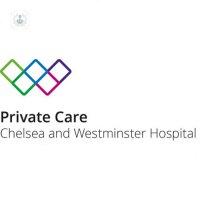Pregnancy
Dr Irfana Koita - Fertility specialist
Created on: 03-03-2017
Updated on: 12-21-2023
Edited by: Carlota Pano
What is pregnancy?
Pregnancy is the physiological condition of a woman, starting from the moment of conception of the foetus, including the baby’s growth, until birth. Pregnancy is usually categorised by weeks (for a total of 40) and lasts around 280 days. Under particular circumstances, the baby can be born before (premature birth) or after the estimated due date.

What is conception?
Conception is the process that occurs as a result of semen entering the woman’s reproductive system. The spermatozoa in the semen then travel through the cervix to the fallopian tubes. The ovum (or egg), which can be found in the fallopian tubes, is then fertilised by a sperm and undergoes a series of cellular divisions while it travels to the uterus. If more than one egg is released, or if one fertilised egg splits into more than one embryo, this leads to a multiple pregnancy.
Once it has reached the uterine cavity, the fertilised egg adheres to and penetrates into the uterine lining (the endometrium). From that moment on, the foetus starts developing.
Women’s fertility reaches its peak during ovulation, when the egg moves towards the fallopian tubes. This time frame can last up to six days and it is known as ‘fertile window’.
What is gestation, and how long does it last?
Gestation, in simpler terms, is the period of time between conception and birth. It usually lasts roughly 40 weeks, which is the time it takes for the baby to develop. The first eight weeks are really important, as during this time period, the baby is developing the organs he or she needs in order to survive.
What symptoms will a mother have during gestation?
The mother will have symptoms such as nausea, irritability, fatigue, and enlarged breasts during gestation.
Weeks 8-13: The mother’s body will start changing; the baby’s genital organs will differentiate and the vocal cords will be formed. At that time, the most critical part of the pregnancy is over, leaving behind most risks of abortion or health problems for the baby. This is the period of time when the second trimester of pregnancy begins.
Weeks 13-17: The mother will feel less tired and the nausea will go away, and the baby will now, at this stage, be fully formed.
Weeks 17-21: The mother will start feeling the first movements of the baby.
Weeks 21- 26: The mother’s belly will become more evident and she will start feeling the first uterine contractions; at the same time, the baby’s weight will increase, the eyelids will start opening and closing and he or she will start trying to breathe.
Week 26: The beginning of the last trimester. The baby will keep on growing.
Weeks 30-35: The baby will change position in order to get ready for birth; the mother will start suffering from intense back pain and abdominal pain, and the uterine contractions will become more frequent.
Weeks 35-40: The last month of gestation. The baby will be fully developed and will start turning upside down, with the head towards the pelvic cavity.
Throughout a pregnancy, there are certain nutritional guidelines recommended to promote healthy development and to ensure the woman is consuming enough calories. Women are also advised to abstain from alcohol and smoking because of the risks these pose to their baby.
What tests are carried out during pregnancy?
During pregnancy, women will have several tests, depending on their pregnancy and how it is going, as part of their antenatal care. Certain tests are standard and given to all patients, whilst others are given only in certain scenarios, such as cases of a high-risk pregnancy.
The following tests may be carried out by an obstetrician who has specialised further in fetal medicine.
- Ultrasound, including 4D ultrasound and the 20 week scan which checks for any anomalies
- Prenatal diagnosis
- Amniocentesis
- Fetal echocardiogram
- Chorionic villus sampling

What are the most common pregnancy-related complications?
Unfortunately, not all pregnancies are the same, with some women experiencing certain complications. These can include:
- Pre-eclampsia
- Ectopic pregnancy
- Gestational diabetes
- Gestational hypertension
- Premature birth
- Postpartum depression (this occurs after childbirth)
- Melasma (not a serious concern, but pregnant women are prone to developing this skin condition)
- Pelvic floor issues (some women may have pelvic floor problems following birth, and obstetric physiotherapy may be required)
What is labour, and what occurs during it?
Labour is when the baby leaves the mother’s body. It can happen in several ways, with the main ones being as follows:
- Natural: Also known as vaginal birth or spontaneous birth.
- Caesarean section or C-section: Carried out if the baby is in the breech position (feet first), if the mother has a low-lying placenta (placenta praevia), if the baby is in distress, if it’s a twin pregnancy, if the mother has had uterus surgery before, or if either the mother’s or the baby’s health is in danger. A C-section can be planned, or it can be chosen as an emergency measure.
- Induced birth: If it is two weeks past the due date and the baby hasn't been born, and either the mother’s nor the baby’s health is in danger, labour can be induced manually or by administering oxytocin and giving an epidural to the mother.
Many women will choose to prepare for childbirth, by doing their research, getting advice, or attending childbirth classes. Some women may even choose to do exercises designed to help strengthen their pelvic floor, such as pregnancy pilates. Other women may also see an osteopath to help with symptoms such as lower back pain. Women may also seek postpartum osteopathy for helping them after birth in certain areas.
Which doctor should I speak to during my pregnancy journey?
Pregnancy is a very delicate period both for the future mother and for the baby, and this is why they both need to be assisted throughout the whole journey. It is important to see a specialised obstetrician/gynaecologist, who will be able to give pregnant women more information about pregnancy, including what the related risks and symptoms are, and what pregnant women can do so that both them and their baby will be perfectly healthy.
How can women accurately calculate their due date?
An ultrasound scan in the first trimester of pregnancy is the most accurate method of calculating a woman's due date.
Another effective way that one can estimate their due date is by writing down or noting when their last period started, then adding seven days, counting back three months, and then adding a year. The day the patient ends up on is an estimate of their due date.
What is gestational diabetes?
Gestational diabetes is a commonly-suffered condition amongst pregnant women, and it usually begins from week 20 onwards of any given pregnancy. Fortunately, gestational diabetes goes away on its own after the woman has given birth. Not all women suffer from gestational diabetes during their pregnancy, though, and doctors are not entirely sure why a select few suffer from it and others don't.
Am I at risk of suffering from pregnancy-induced hypertension?
Pregnancy-induced hypertension, which is also known as gestational hypertension, is also quite a common condition that pregnant women tend to suffer from during their pregnancy.
Certain women, though, are at a higher risk of experiencing it, with the main risk factors for this form of hypertension including the following:
- Women who are under the age of 20 and over the age of 40
- Women who have previously had high blood pressure
- Women who are pregnant for the first time
- Women who are pregnant with multiple babies
This condition, just like gestational diabetes, goes away on its own once the woman has given birth.

















